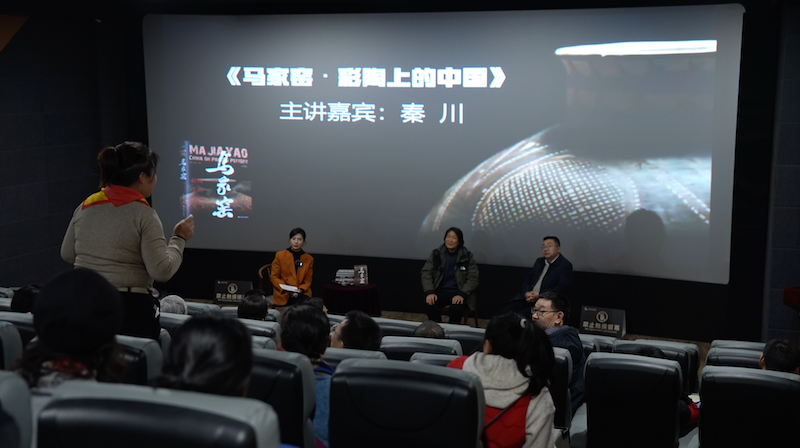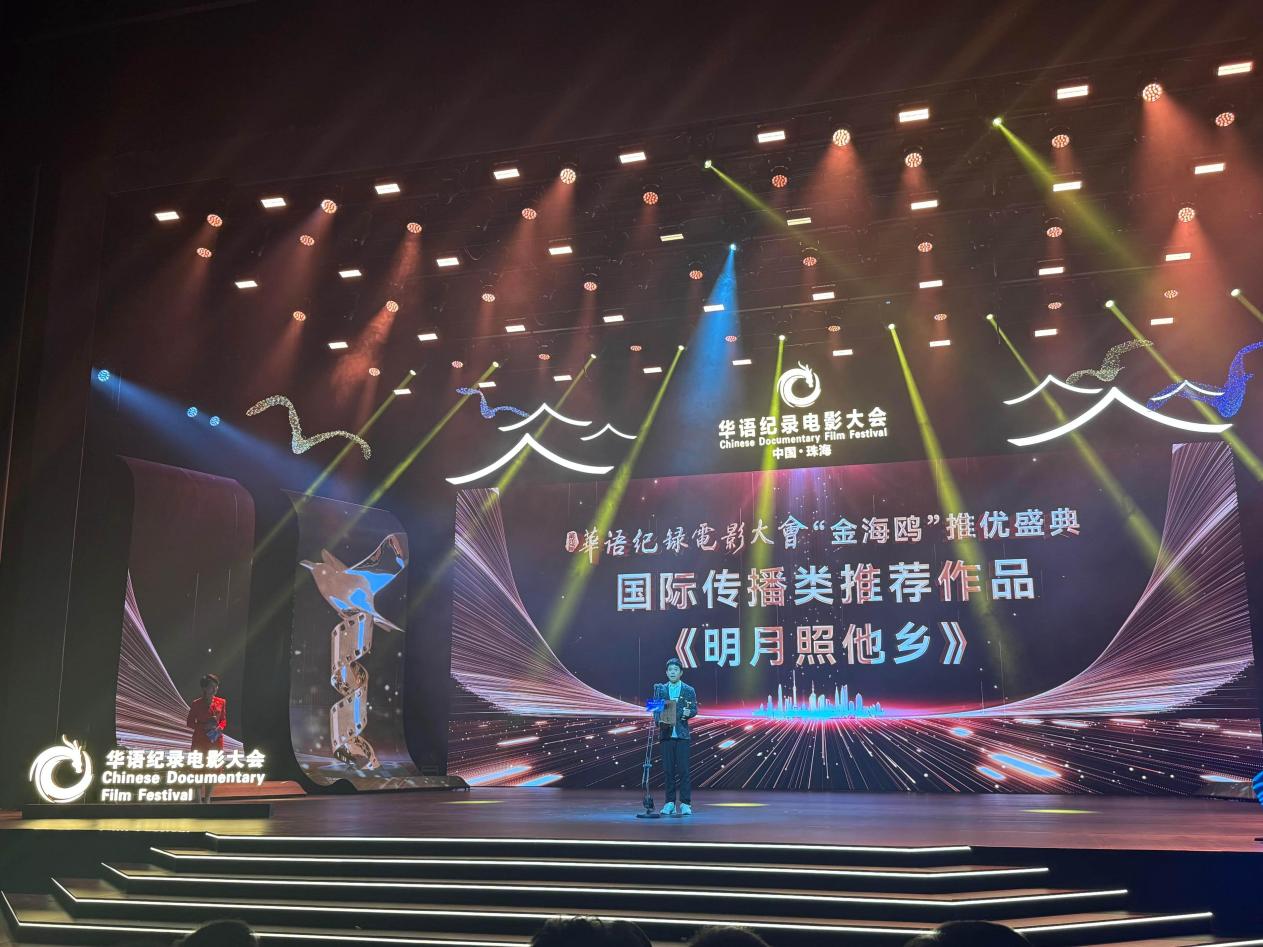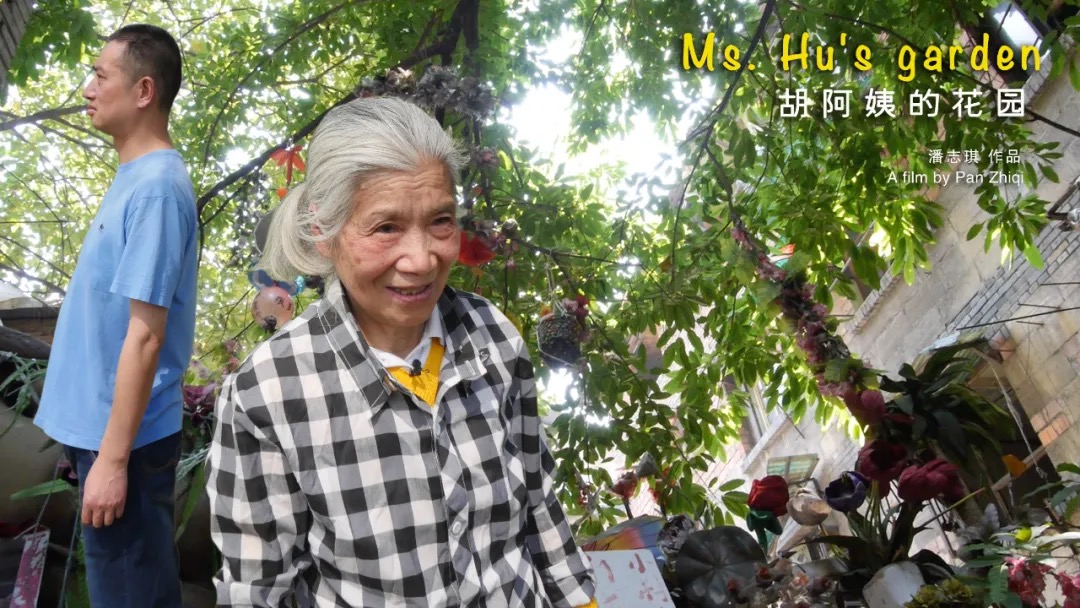
In 1924, Swedish scholar Johan Gunnar Andersson arrived on the banks of the Tao River in Gansu Province and discovered for the first time Neolithic Majiayao painted pottery, thus beginning the exploration of the Majiayao culture. For over a century, generations of Chinese archaeologists have worked tirelessly to excavate and study the Majiayao culture. The dissemination of the Majiayao culture has greatly expanded the space for the survival and development of Chinese civilization. On November 23, a public screening of the book "Majiayao: China on Painted Pottery" and the first offline book signing of the same name were held at the Yineng Holiday Cinema in Qilihe District, Lanzhou. The book, using a combination of text and images, and a century of Chinese archaeological findings and textual research, tells the story of the Majiayao culture.
The Majiayao culture is a late Neolithic culture in the upper reaches of the Yellow River. It originated from the Miaodigou type of the Yangshao culture. Archaeological research shows that population pressure and the combination of agriculture and hunting and gathering economy prompted this culture to differentiate and develop from the Yangshao culture. It dates from about 3300 BC to 2050 BC and was mainly distributed in the Taohe River, Daxia River and Huangshui River basins in Gansu and Qinghai provinces.
The Paper learned that the book "Majiayao: China on Painted Pottery" was written by renowned documentary directors An Qiu and Qin Chuan and published by Readers Publishing House. The book is based on the CCTV documentary "Majiayao: China on Painted Pottery," produced by Qin Chuan and An Qiu's team over four years. It focuses on archaeological evidence of the Majiayao culture, combining a century of Chinese archaeological achievements with textual research to unveil the mysteries of the Majiayao culture.

Public screening of "Majiayao: China on Painted Pottery" and the first offline book signing event of the same name
The documentary "Majiayao: China on Painted Pottery," premiered on CCTV Documentary Channel on July 21st this year. Divided into three chapters—"Discovery," "Code," and "Evolution"—it uses an "archaeological evidence + artistic reconstruction" approach, integrating anthropological, art historical, and civilizational perspectives to deeply decode the codes left by the ancient inhabitants of the upper Yellow River five thousand years ago, revealing the early prototype of the diverse yet unified pattern of Chinese civilization. This documentary is also the first systematic, large-scale, and comprehensive visual work to explore the cultural resources of the Majiayao culture since its discovery a century ago.

Documentary "Majiayao: China on Painted Pottery"
The book "Majiayao: China on Painted Pottery" decodes the genes of a 5,000-year-old prehistoric civilization and the arduous journey of the Majiayao culture since its discovery 100 years ago, through chapters on discovery, codes, and evolution, supplemented by numerous pictures. The book also includes interviews with more than ten Chinese and foreign archaeologists, such as Wang Wei, Li Xinwei, Zhang Pengchuan, Han Jianye, Lang Shude, and An Ke (Germany), forming the academic framework and broadening the book's perspective.

"Majiayao: China on Painted Pottery", published by Readers Publishing House
At the event, director Qin Chuan shared the creative story behind the documentary and introduced his new book. Qin Chuan stated that for nearly 20 years, he had been filming Dunhuang, the grottoes, and the Silk Road. Suddenly shifting his focus from the Dunhuang grottoes to Majiayao suddenly broadened his perspective from 2000 years ago to 5000-6000 years ago, bringing a profound spiritual shock. "Majiayao painted pottery is hailed as the 'crown of painted pottery in Eurasia.' This jewel in the crown of prehistoric civilization was born in Gansu, in the upper reaches of the Yellow River, the mother river of the Chinese nation. Therefore, I want to tell everyone that Gansu culture is not only about Dunhuang and the grottoes, but also about a brilliant prehistoric civilization, the foundation of Chinese civilization."

Event site
In an interview note titled "Approaching Majiayao Through Questioning," An Qiu wrote: "When we arrived at the field excavation site of the Siwa site, this imagination became more concrete... Guo Zhiwei, the executive leader of the archaeological team who has been excavating here for 10 years, led us through the collapsed earthen walls, introducing their semi-subterranean houses, the cellars outside the doors for storing food, the remains of the circular hearth inside the houses, and the kiln-making functional area that is equivalent to a handicraft workshop... This underground world, which outsiders cannot understand, is so silent and mysterious, but it is the equation that the archaeologists used to deduce the Majiayao civilization, and it contains the letters they left for this time and space."
It is reported that the book "Majia Kiln: China on Painted Pottery" was planned and launched by the Wanwu Shengzhang team and published by Readers Publishing House, and has been distributed nationwide.
Appendix: Preface to "Majiayao: China on Painted Pottery"
By Han Jianye
A century ago, just when the history of ancient China was being arbitrarily questioned, and the origins of Chinese civilization seemed to have vanished, it was Johan Gunnar Andersson from Sweden and his Chinese colleagues who excavated the Yangshao site, providing us with archaeological evidence of "ancient Chinese culture." Based on the limited archaeological data available at the time, Andersson proposed the hypothesis that "Yangshao painted pottery originated in the west." To verify this hypothesis, he subsequently conducted archaeological work in the Gansu-Qinghai region, excavating sites such as Majiayao, and discovering a large quantity of painted pottery. Of course, later archaeological research proved that Chinese painted pottery originated in the east but developed later in the west, and the theory that painted pottery originated in the west was incorrect. However, this does not negate the cultural exchanges that already existed between China and the West.

Andersson
Four to five thousand years ago, the Majiayao culture, centered in Longxi, continuously spread south and west, leaving their mark on vast areas including Sichuan, Yunnan, Qinghai, Tibet, and Xinjiang. They brought pottery (especially painted pottery) and millet agriculture to the local hunting and gathering societies, laying the prehistoric foundation for western China. Further outwards, the pottery, stone tools, and millet of the Majiayao culture and its successors spread to at least Central and South Asia. Conversely, painted pottery, livestock, wheat, and bronze technology from Central Asia also spread to China during the same period. This two-way migration opened up the "Painted Pottery Road," a crucial link in early East-West cultural exchange.
Thousands of years ago, the ancient people of China and the West met because of painted pottery, and thousands of years later, scholars from China and the West became connected because of painted pottery. Isn't that amazing?
Why painted pottery in particular?
Painted pottery, with its vibrant and lively colors, is one of the most outstanding forms of folk art in the ancient world, loved by people in ancient times and still appreciated today. Its distinctive features may have made it an important medium for our ancestors to convey information, share emotions and understanding, and it also serves as an excellent entry point for observing cultural differences. It was precisely because Andersson was deeply attracted by the beauty of painted pottery that he made the connection between painted pottery from distant East and West, suggesting a shared origin.
The painted pottery of the Majiayao culture can be considered the pinnacle of painted pottery, having long since shed its childishness and displayed a mature beauty. The lines are lively and varied, flowing in one go, natural and vivid, rarely alike, yet they implicitly contain the laws of nature, far surpassing the works of those artists who sign and stamp their names (which are mostly commodities).

Majiayao type water ripple painted pottery basin
Many people love painted pottery, especially Majiayao painted pottery, often falling in love at first sight. This includes renowned directors (and screenwriters) Qin Chuan and An Qiu. Driven by their love for Majiayao painted pottery and their passion for exploring Chinese civilization and cultural exchange, Qin Chuan and An Qiu's team devoted considerable effort to studying literature, examining artifacts, interviewing dozens of archaeologists and art historians, and traveling extensively throughout China and even between China and Switzerland. They finally completed the three-part documentary series "Majiayao: China on Painted Pottery," which aired during prime time on CCTV's documentary channel. Perhaps because they felt the Majiayao culture was so important, the painted pottery so beautiful, and the interview material so precious, they felt it necessary to present it to the public in book form, which gave me the opportunity to write this preface.
My connection with directors Qin Chuan and An Qiu began three years ago through a documentary about the Majiayao culture, and we hit it off immediately. Qin Chuan's inherent free spirit, An Qiu's undeniable talent, and their dedication and seriousness all left a deep impression on me. My first impression of the book they compiled was its beauty. Both the old and new photos are beautiful, the layout is lively, and the text is concise, vivid, and effortlessly elegant. Especially the interview transcripts, which intentionally preserve the original flavor of the interviews, are unadorned and full of vivid imagery. I believe many people, like me, will fall in love with this book simply because of its first impression of beauty, just as they fall in love with the painted pottery of the Majiayao culture.

Taohe and Siwa Ruins (gentle slope at the foot of the central mountain)
Of course, there's also its inner beauty. The book is divided into three main parts: the legendary discovery of the Majiayao culture, its profound secrets, its development and far-reaching influence, with a clear main thread. The "Discovery" section begins with Andersson. His reasons for coming to Gansu and Qinghai, his vivid archaeological experiences, the proposal of the "Six-Phase Theory," the agreement with the Chinese government, the establishment of the Museum of Far Eastern Antiquities in Sweden, Mr. Xia Nai's naming of the Majiayao culture, and his later research on the origins and development of the Majiayao culture, the correction of the "Western Origin Theory of Painted Pottery of Yangshao Culture," and the reason for the book's title, *Majiayao: China on Painted Pottery*, are all rich and comprehensive. It recounts a century of vicissitudes, involving countless people and events, and connecting China and Sweden, making it highly engaging.
The "Code" section begins with pottery making. How were these exquisite painted pottery pieces made? Where was the clay sourced? How were the colors applied? This is the main focus. The painted pottery of the Majiayao culture is truly exquisite; even the capital city of Nanzuo in Longdong, in terms of painted pottery technology alone, cannot compare. The pointed-bottom bottle was, of course, a wine vessel used for worshipping heaven and ancestors, and these rituals were inseparable from drums and music. We can imagine the vivid and sacred scene of the Majiayao ancestors five thousand years ago, beating drums and playing the xun (a type of ancient Chinese wind instrument), singing and dancing, and offering wine in sacrifice. The meanings of those intricate and diverse painted pottery patterns and symbols are now difficult to ascertain, but the Majiayao ancestors must have been familiar with them. Perhaps in their hearts, frog patterns were indeed related to Nuwa and the "creation of humankind." And the saying "art originates from life" is best interpreted in the painted pottery of the Majiayao culture.

Banshan type pottery unearthed at the Siwa site
The section on "Evolution" begins with Sanxingdui. The renowned Sanxingdui culture's ancestors were primarily descendants of the Majiayao culture. Whether it was the Majiayao culture's westward and southward expansion or its inheritance and development in Gansu, Qinghai, and Ningxia, it possessed significant temporal and spatial depth, leaving a profound mark on ancient history. Many peoples and cultures in western China today still maintain intricate connections with the Majiayao culture. You'll find that the hand-holding group dances still popular in these regions bear a striking resemblance to the dance patterns on the Majiayao culture's dance-themed basins. This connection spanning thousands of years is truly thought-provoking. The Majiayao culture also opened the door to cultural exchange between East and West relatively early, enabling Chinese civilization to be inclusive, vibrant, and enduring. Such a crucial historical position is not recorded in historical annals, but has only been revealed to the world over the past century through the arduous efforts of archaeologists.
After reading it, I felt deeply that the exploration and research of the Majiayao culture is a microcosm of the development history of Chinese archaeology.
The book also includes two articles. Among them, the work by Mr. Zhang Pengchuan, a renowned scholar of painted pottery, offers a comprehensive discussion of Chinese painted pottery and polychrome pottery, demonstrating a broad perspective and profound expertise, making it well worth reading.
I am naturally happy to recommend such a wonderful book, which is both beautiful and artistic.
July 18, 2025, Beijing
(The author is a professor in the Department of Archaeology and Museology, School of History, Renmin University of China)


